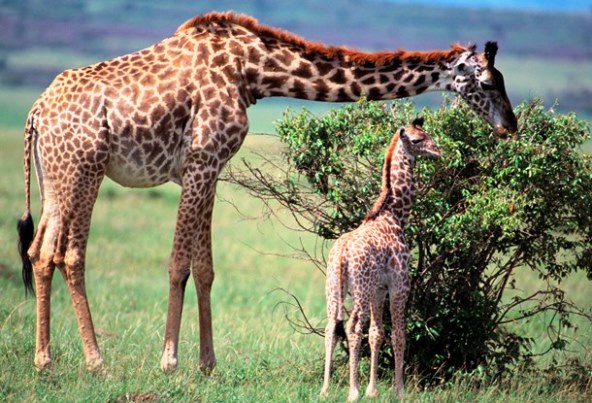In 2016, animal researchers and geneticists concluded that the giraffe (genus Giraffa), once thought to consist of a single extant species (Giraffa camelopardalis), comprises four distinct species: the northern giraffe (Giraffa camelopardalis), including three subspecies; the southern giraffe (Giraffa giraffa), including two subspecies; the reticulated giraffe (Giraffa reticulata); and the Masai giraffe (Giraffa tippelskirchi). This startling discovery has major implications for conservation efforts, especially as the collective giraffe population is declining dramatically throughout Africa. Giraffe numbers have fallen by 38%, dropping from approximately 157,000 individuals in 1985 to 97,500 individuals in 2016. Consequently, the International Union for Conservation of Nature (IUCN) now considers the giraffe to be a "vulnerable" animal (as opposed to one of "least concern," as it was classified previously in 1985). See also: Africa; African mammals; Biodiversity; Conservation (species); Endangered species; Giraffe; Population ecology; Speciation

The plummeting numbers of the giraffe are the direct result of illegal hunting and habitat loss and fragmentation (predominantly ensuing from human-based agricultural and mining enterprises), and conservationists agree that the realignment of the giraffe into four species will allow for stronger protective measures to be undertaken for each of the endangered species. In particular, the northern and reticulated giraffes have suffered greater population drops (the northern giraffe is estimated to have fewer than 4750 remaining individuals, and the reticulated giraffe fewer than 8700) and are in more serious danger of extinction, so these mammals require greater efforts to safeguard them. See also: Anthropocene extinction; Extinction (biology); Extinction of species
To determine the species status of giraffes, scientists analyzed the nuclear and mitochondrial deoxyribonucleic acid (DNA) sequences from 190 giraffe skin specimens. Four distinctive patterns were found among the genetic sequences, leading investigators to conclude that there were four separate species. Further studies confirmed that the four giraffe species do not mate with each other in the wild (thereby hindering repopulation efforts), despite the fact that interbreeding has been observed in captivity. The conclusions of the genetic analyses should enable conservationists to focus on managing and preserving each of the four species according to its particular environmental and ecological needs. As the world's tallest terrestrial animals, giraffes have been clearly visible to scientists and animal enthusiasts all along, but these endangered creatures have too long been ignored by actual taxonomic and conservation science. See also: Deoxyribonucleic acid (DNA); DNA sequencing; Genetic mapping; Genetics; Phylogenetics: predicting rarity and endangerment; Population genetics; Population viability





